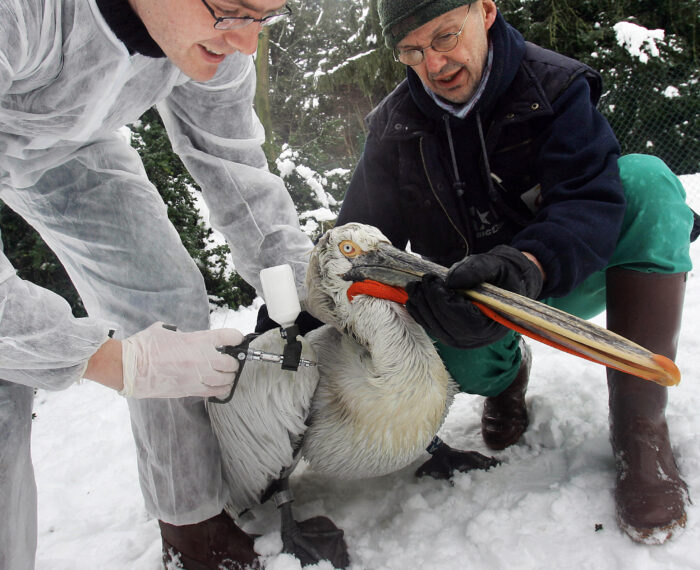Almost 96 percent of Southern elephant seal pups across Argentina born in 2023 have met a tragic end as a highly contagious strain of avian influenza continues to wreak havoc on wildlife.
The scale of mortality sparks concerns that the H5N1 strain is now capable of mammal-to-mammal infection.
“The sight of elephant seals found dead or dying along the breeding beaches can only be described as apocalyptic,” says Wildlife Conservation Society (WCS) health director Chris Walzer.
The three beaches where the species breeds were littered with over 17,000 bodies of baby Southern elephant seals (Mirounga leonina).
“This 2023 die-off contrasts starkly with the 18,000 pups born and successfully weaned in 2022,” explains Walzer.
This amounts to the loss of nearly an entire generation of elephant seals in the region. As these animals take at least three years to reach maturity, the impact on their population may not be felt until 2027 when there are fewer available breeding adults to produce subsequent generations.
While H5N1 has been around since 1996, it was mostly circulating among domesticated birds for years, leading to the culling of hundreds of millions of animals. Moving into wild bird populations, it has now reached Antarctica, possibly exacerbated by changes in migration schedules thanks to climate change.
Just last week a polar bear was confirmed to have been killed by avian influenza in a world first, adding to a fast growing list of mammal victims that include endangered Caspian seals, grizzly bears, dolphins, otters, mink, and foxes. All up the virus has infected about 345 bird and mammals species.
The majority of mammals impacted so far are predators, prompting some experts to suggest they likely caught the virus directly from their prey rather than from each other. So the virus may not yet be capable of spreading between mammals.
But elephant seal pups, who drink their mothers milk, don’t tend to come in contact with bird fluids.
“Nursing pups remain close to their mothers and opportunities for interaction with birds (mainly gulls) are basically restricted to the context of birds eating placentas during diurnal births,” WCS ecologist Claudio Campagna and colleagues explain in a report.
“This is all highly suggestive of some sort of transmission between mammals,” wildlife veterinarian Marcela Uhart from University of California, Davis, told Luke Taylor at New Scientist.

While mammal-to-mammal transmission is not yet confirmed, it is a very real possibility. As we’ve all experienced first hand with the COVID pandemic, viruses are frighteningly good at adapting. Influenzas are particularly notorious for their ability to change things up, and researchers have already identified shifts in H5N1 receptor binding proteins that would make them better at infecting human hosts.
Influenza viruses tend to be extremely contagious and H5N1 is no exception. A virulence measure known as R naught has a value of up to 100 for H5N1 in birds. That means each infected individual has the potential to infect up to 100 others. For comparison, the R naught for early COVID-19 variants ranged from 1.5 to 7.
As far as we know, humans have so far only caught bird flu from other animals on rare occasions. Last year there were a total of 248 reported cases, with 139 fatalities. This means Avian influenza has a staggering fatality rate of 56 percent in humans so far.
In light of these events, the World Health Organization is urging health officials to prepare for continued spillover into human populations as the virus continues to rage through livestock and wildlife.
They advise us all to avoid contact with sick or dead animals and to report all such cases to animal health authorities.
If we can swiftly prevent spread in outbreak areas through vaccination then the virus will have less opportunity to develop a way to sustainably spread between people.
“The cost of inaction is already causing major devastation to wildlife,” warns Walzer. “As we work to help affected populations recover, we must remain vigilant against the spread of this deadly pathogen to people before it’s too late.”





